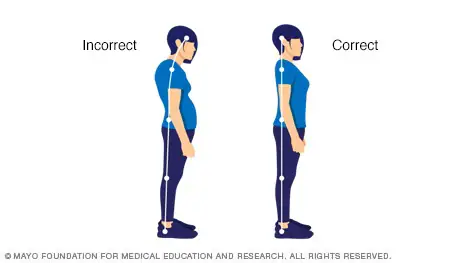Estimated reading time: 0 minutes
Unsupported postures cause improper burden distribution on the spine, resulting in weakened lower back tissues. As a result, the intricate network of muscles, discs, and joints in your back is overstretched, causing discomfort. Similarly, an injury caused by improperly raising a heavy object may result in immediate back pain and dysfunction.
Here are the most common back positions that cause distress, as well as the corrective measures you can take.
Chronic unsupported positions
The actions of walking, sitting, standing, bending, lifting, and lying down are typical of daily existence. You may develop the following routines while performing these actions:
- Slouching or slouching in your office chair or sofa is improper posture.
- While supine on the bed, working on a laptop or perusing a book on a book
- Utilising your laptop while seated on a bed
- Long periods of hunching forward while mowing the lawn or washing utensils can cause back pain.
- Using a one-handed vacuum and extended arm movements
- Concentrating your weight on one limb while standing
- Walking with a curved back and no head or abdominal support.
- Lifting heavy items off the floor while bending your spine
If you adopt any of these incorrect positions, you will almost certainly experience back discomfort. A sedentary lifestyle or lack of physical activity can result in increased stress and back pain.
If your pain coincides with the start of a new job, the use of a new office chair or car, subsides after changing positions, and/or worsens at specific times, poor posture is likely to be the cause.
Bad posture is the cause of back pain.
When you have poor posture, your muscles, spinal joints (lumbar facet joints), and discs may develop stress points. These strains may be alleviated if the problematic posture is altered, or they may continue to accumulate, thereby progressively weakening the afflicted structure, as in:
- Prolonged slouching while standing or sitting can strain and irritate your back, core, and abdominal muscles, restricting blood flow and progressively causing trunk and lower back stiffness and weakness.
- Unsupported sitting causes a slight curvature of the vertebrae forward. This forward lean may eventually cause herniation of the lower spinal discs.
- Lifting improperly can result in a herniated lumbar disc, causing pain in the lower back and/or radiating pain into the limb via a nearby spinal nerve.
- Working on a laptop or reading on your stomach could cause your lower back and hip to expand (bend backward), altering the lower spinal curvature.
Typically, maintaining good posture requires less effort than maintaining poor posture. It may take time and perseverance to change a habitual poor posture.
Here are some tips for maintaining correct posture when strolling, sitting, and lifting.
Stride Tall
While walking, it is essential to maintain your head balanced above your spine and to look straight ahead. Keep your back erect and relax your shoulders. Land on your heel and then steadily roll forward to propel yourself off the front of your foot. Each stride requires a moderate spinal rotation by extending the opposite arm forward.
Sit with support and stand every hour.
While sitting and working in an office chair, keep your back flush against the chair, your head over your vertebrae, your shoulders rolled back, and your shoulder blades down. Bend your forearms to an angle between 75 and 90 degrees. Your legs ought to be hip-distance apart and level on the ground. Utilise a footrest if you are unable to reach the floor.
Utilise a small cushion or rolled-up towel to support your lower back and maintain the lumbar curve. Get up and take a short walk every hour to relieve pressure on your discs.
Lift with extreme caution.
To lift a heavy object off the ground, kneel in front of it while maintaining a straight spine and bent knees. Hold the object close to your chest while standing with your legs straight.
To transport lighter objects, use one hand to support a table or counter, bend at the hip while maintaining a straight back, and elevate one leg behind you for counterbalance. Lift the object using your free hand. The golfer’s lift is an especially useful technique for repetitive lifting exercises.
To summarise –
Your spine flourishes in an environment that is healthy, well-supported, and ergonomically stable. To prevent the tissues from becoming irritated again, it is essential to maintain a supportive and correct posture. If your back pain does not improve or disappear after making the suggested postural adjustments, you should consult a physician for an accurate diagnosis of your back condition.
Related-
Know more about Ayurvedic Spinal Disk & Radiculopathy Treatments.
GET IN TOUCH


Recent comments